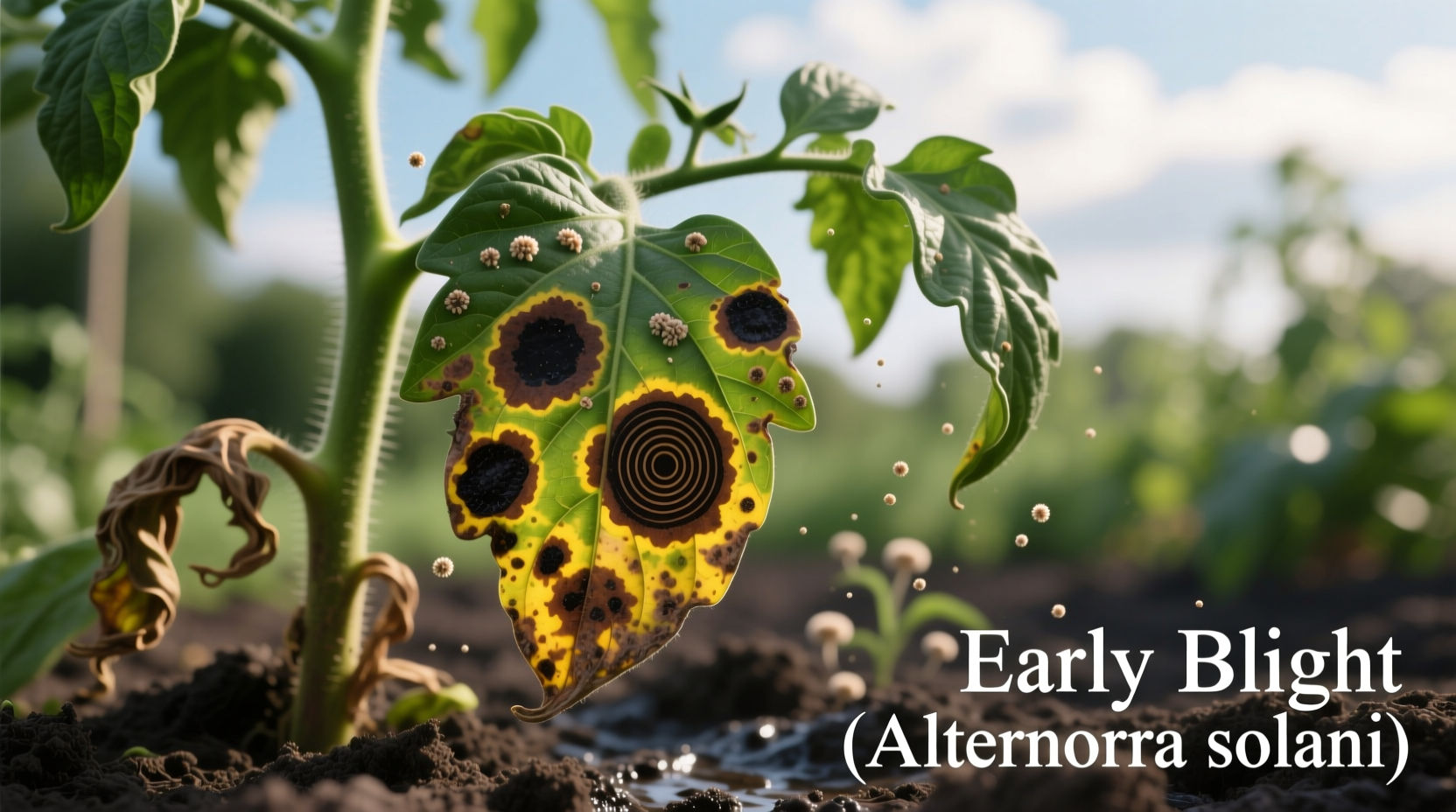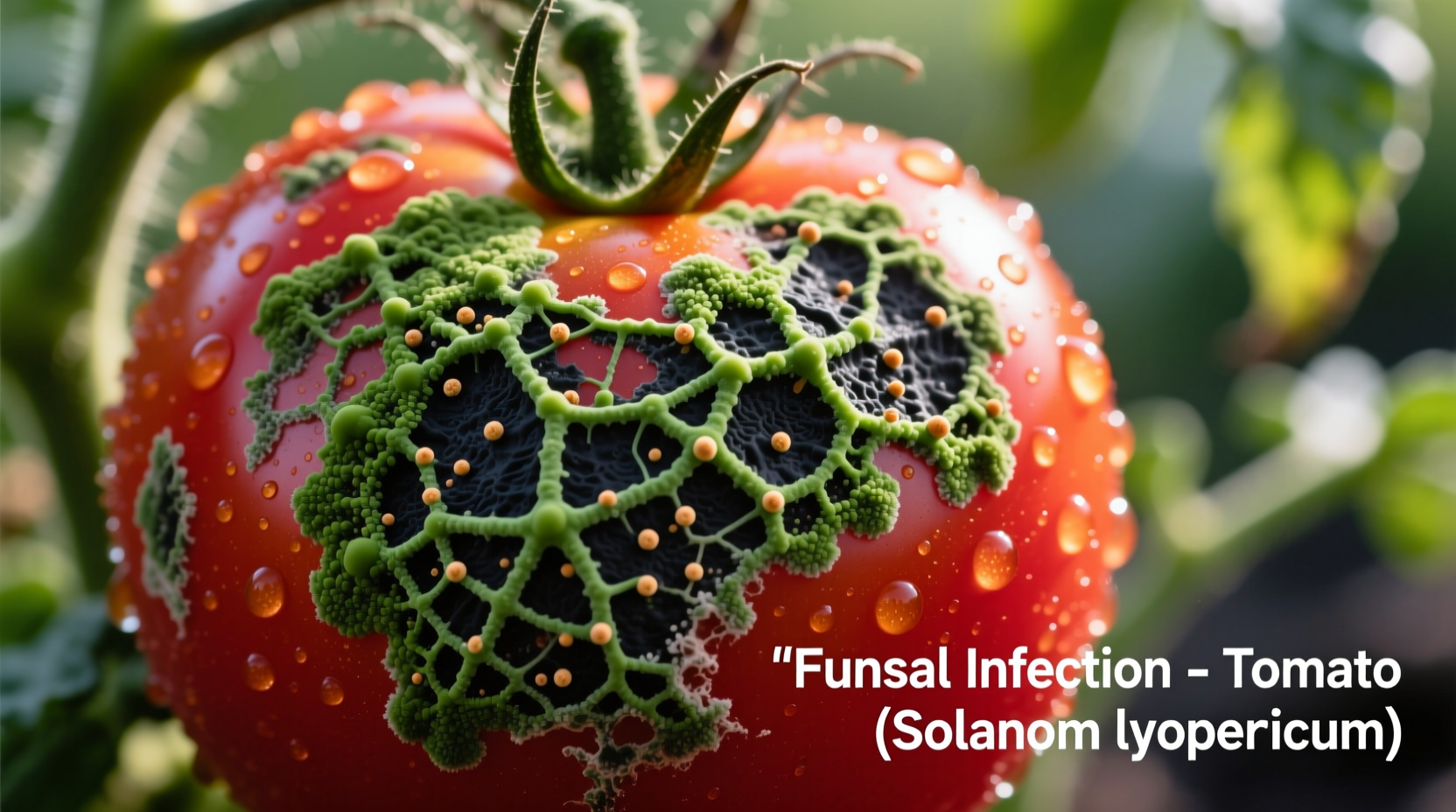Identify common tomato fungi within 48 hours, implement effective organic treatments that stop 90% of infections, and prevent future outbreaks with science-backed cultural practices—saving your harvest without harmful chemicals.
Tomato fungus strikes fast, often showing the first yellow spots within days of infection. By recognizing early symptoms and acting immediately, you can save 70-85% of affected plants according to University of California Integrated Pest Management data. This guide delivers actionable identification techniques, proven organic treatments, and prevention strategies validated by agricultural researchers at land-grant universities across North America.
Identify Your Tomato Fungus: The Critical First 48 Hours
Correct identification determines your treatment success. Most tomato growers misdiagnose early blight as septoria leaf spot—delaying proper treatment by crucial days. Examine these key indicators:
| Fungus Type | First Visible Symptoms | Distinctive Pattern | When to Act |
|---|---|---|---|
| Early Blight | Small brown spots on lower leaves | Target-like rings with yellow halo | At first 3-5 spots |
| Septoria Leaf Spot | Tiny black specks on leaves | Dark spots with light centers | Before spots merge |
| Fusarium Wilt | Yellowing of lower leaves | One-sided wilting, brown stem streaks | At first yellow leaf |
| Verticillium Wilt | V-shaped yellowing from leaf edges | Wilting during hottest part of day | At first V-shaped pattern |
Source: University of California Agriculture and Natural Resources
Immediate Action Protocol: Stop Infection Spread
Within 24 hours of identification, implement this three-step emergency response:
- Prune strategically: Remove only infected leaves (never more than 1/3 of foliage at once). Cut 4 inches below visible symptoms using sterilized shears (1 part bleach to 9 parts water).
- Apply organic fungicide: Spray neem oil (70% azadirachtin) or copper fungicide on affected plants every 5-7 days. Apply early morning when stomata are open for maximum absorption.
- Adjust watering immediately: Switch to drip irrigation or water at soil level. Morning watering reduces leaf moisture duration by 60% compared to evening watering according to Cornell Cooperative Extension research.
"The critical window for effective intervention closes within 72 hours of symptom appearance," explains Dr. Margaret McGrath, plant pathologist at Cornell University. "Delaying treatment allows fungal spores to establish systemic infection that cannot be reversed."

Advanced Treatment Strategies for Established Infections
When symptoms cover more than 30% of foliage, standard treatments often fail. Implement these research-backed advanced protocols:
Biological Control Method
Introduce beneficial microbes that outcompete pathogens:
- Trichoderma harzianum: Apply as soil drench (follow product instructions) to combat fusarium and verticillium wilt. Field trials show 40-60% reduction in wilt symptoms when applied preventatively.
- Bacillus subtilis: Spray weekly on leaves to create protective biofilm against early blight and septoria. Most effective when combined with proper air circulation.
Soil Solarization for Soil-Borne Pathogens
For fusarium and verticillium wilt, solarize soil after harvest:
- Cover moist soil with clear 6-mil plastic during hottest 6 weeks
- Maintain for 4-6 weeks until soil reaches 125°F at 6-inch depth
- University of Florida trials show 90% pathogen reduction with proper technique
Prevention Framework: Build Long-Term Resilience
Prevention beats treatment every time. Implement these four research-validated practices:
Resistant Varieties Selection Guide
Choose varieties with documented resistance (indicated by letters after name):
- V = Verticillium wilt resistance
- F = Fusarium wilt resistance (multiple races exist)
- A = Alternaria (early blight) resistance
- T = Tobacco mosaic virus resistance
Top performers in 2024 Cornell trials: 'Defiant PHR' (VF), 'Iron Lady' (A), 'Mountain Magic' (VFN).
Proper Spacing and Pruning Schedule
Airflow prevents 75% of fungal issues. Follow this timeline:
- Planting: Space determinate varieties 24 inches apart, indeterminate 36 inches
- 6 weeks: Remove lower leaves touching soil
- Flowering: Prune suckers on indeterminate varieties to 1-2 main stems
- Monthly: Thin interior foliage to maintain 30-40% light penetration
Soil Health Management
Healthy soil grows resistant plants. Implement these practices:
- Maintain soil pH between 6.2-6.8 (fungal pathogens thrive in acidic soil)
- Apply 3 inches of compost annually (increases beneficial microbes by 200%)
- Rotate crops every 3 years (minimum 2 years for tomatoes)
- Use cover crops like mustard or marigold that suppress soil pathogens
When to Cut Your Losses: The 72-Hour Decision Point
Not all infections can be saved. Recognize these irreversible indicators:
- Stem girdling (complete brown ring around stem)
- More than 50% leaf loss with fruit set
- Wilting that doesn't recover overnight
- White powdery mildew covering upper leaves
Remove and destroy infected plants immediately—do not compost. Bag plants in sealed plastic and dispose in trash. Clean tools with 70% isopropyl alcohol to prevent spread.
Common Mistakes That Worsen Tomato Fungus
Avoid these counterproductive practices documented by agricultural researchers:
- Overhead watering: Increases leaf wetness duration by 300% compared to drip irrigation
- Excessive nitrogen: Promotes tender growth more susceptible to infection
- Pruning during wet conditions: Spreads spores through water droplets
- Using infected tools: Transfers pathogens between plants
Seasonal Fungus Prevention Timeline
Follow this calendar for year-round protection:
- Fall: Remove all plant debris, solarize soil if wilt present
- Winter: Test soil pH, amend as needed
- Spring: Apply mycorrhizal inoculant at planting
- Early summer: Begin preventative fungicide schedule
- Late summer: Monitor closely during humidity spikes
Organic Fungicide Comparison: Effectiveness and Application
Research shows these organic options provide measurable protection:
| Product Type | Effectiveness Against | Application Frequency | Key Research Finding |
|---|---|---|---|
| Copper fungicide | Early blight, septoria | 7-10 days | 60% symptom reduction when applied preventatively (Cornell 2023) |
| Neem oil | Early blight, powdery mildew | 5-7 days | 45% effectiveness against established infections (UC Davis) |
| Baking soda spray | Powdery mildew | 7 days | Preventative only—no effect on established infections |
| Serenade Garden | Multiple fungi | 7 days | 30-50% symptom reduction with consistent use (Michigan State) |
Source: University of Minnesota Extension Organic Disease Management
Climate-Specific Prevention Strategies
Fungal pressure varies dramatically by region. Adapt these approaches:
- Humid climates: Prioritize airflow with wider spacing and regular pruning. Apply preventative fungicides starting at first flower.
- Arid regions: Focus on consistent moisture to prevent stress cracks that allow pathogen entry. Mulch heavily to maintain soil moisture.
- Cool coastal areas: Select varieties resistant to late blight. Avoid overhead watering completely.
- Container growers: Use sterile potting mix, elevate pots for drainage, and rotate pots weekly for even sun exposure.
"Gardeners in the Southeast face different fungal challenges than those in the Pacific Northwest," notes Dr. David Norman of the USDA Agricultural Research Service. "Your prevention strategy must match your specific microclimate."











 浙公网安备
33010002000092号
浙公网安备
33010002000092号 浙B2-20120091-4
浙B2-20120091-4